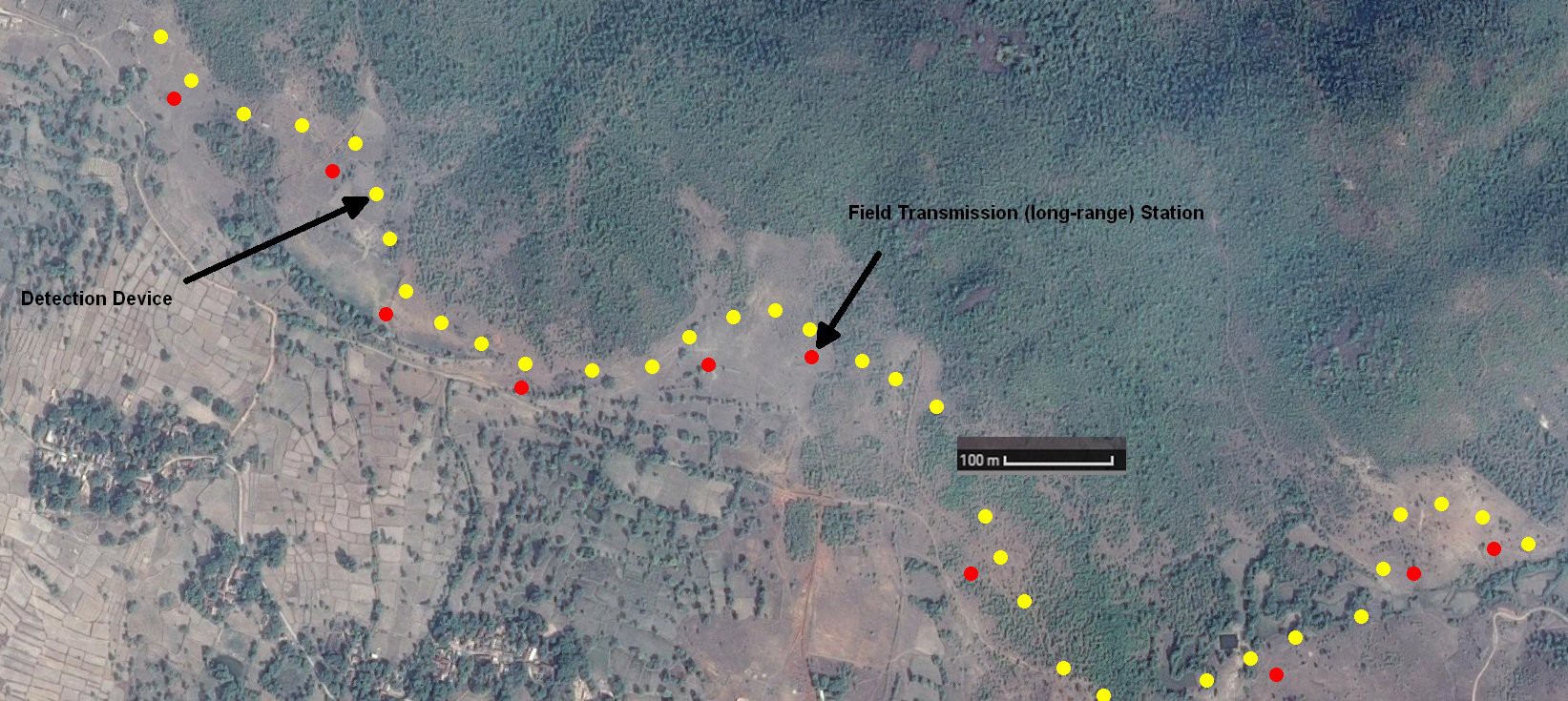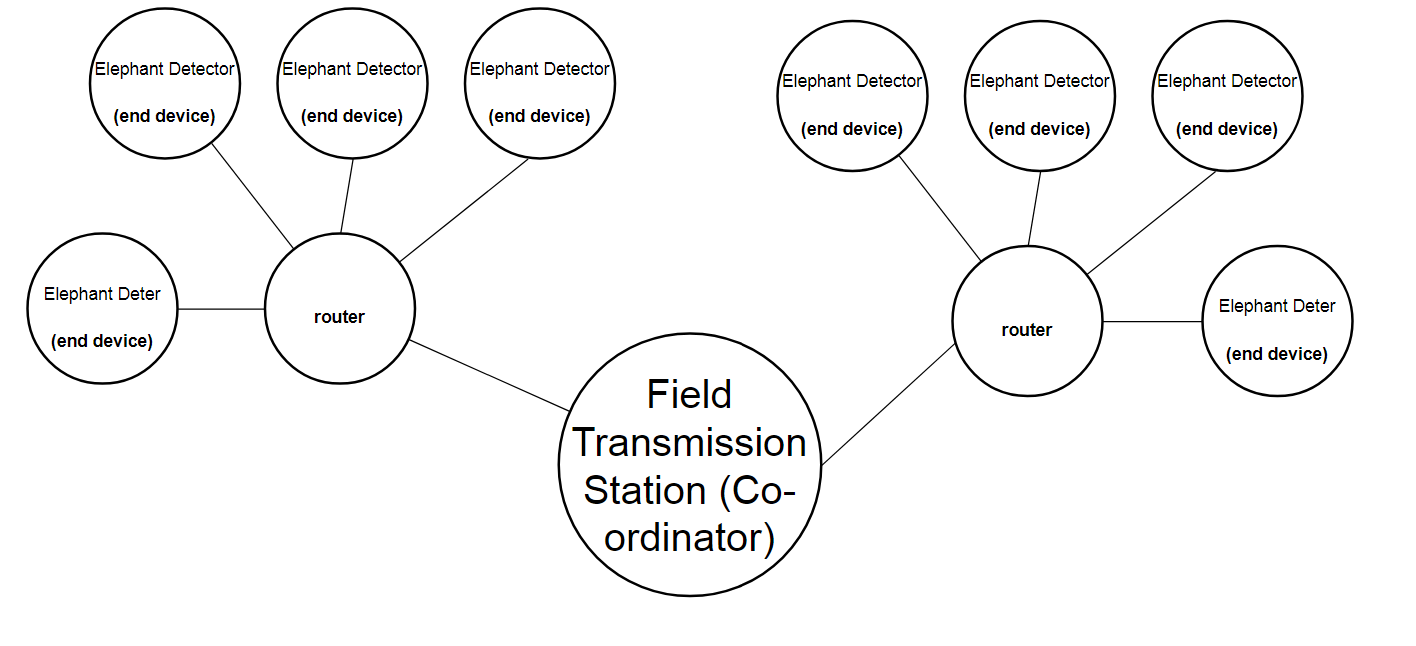So if you recall from Automated Elephant Identification project, we had the concept of setting up RF comms between the elephant detection devices and field transmission stations. The elephant detection devices using XBee 2mW Wire Antenna - Series 2 (ZigBee Mesh) to communicate with the field transmission station. The field transmission station would use a long-range RF modem to communicate with the village base station.

The setup being very basically outlined here:

So we develop that idea a bit more now, and go to testing it.
We are setting up a network. It's arranged in a mesh topology. Although kinda tree topology if not for the deter devices.
There are three device types in the network:
- End device
- Router
- Coordinator
Anyway, so far as I can see, we can go ahead with using the ZB SERIES S2C - 2MW WITH WIRE ANTENNA (range 120m line-of-sight / $23) and setting these as either end device, router, or coordinator.
Example starting point for network topology:

So that's quite good, because we can have each elephant detector 120m from the router, and then the shared coordinator can be 120m from each router. That gives us quite a wide area! And we don't need Bluetooth anymore for the deter devices, so we are more flexible with their locations relative to the elephant detection devices!
Field Transmission Station:
This is the coordinator for our ZigBee network. This is at the root of the tree, and starts the network. It also contains the security keys. So most importantly, as the name Field Transmission Station implies, it will bridge to another network. It was thinking of using the TX6000 LONG RANGE 20KM TRANSMITTER & RECEIVER to do this at up to 500mW RF power output. (£196).
So we can transmit 10-20km line-of-sight from this. Hopefully that is far enough to reach somewhere with wired internet access, or somewhere with 2G/3G coverage! If not, we can use a repeater, giving up to 40km transmission range.
Initial testing:
- First I'll set up a network of 1x elephant detection device, 1x deter device, 1x router, and 1x coordinator. Instead of using the costly long-range TX/RX device, I'll test it by adding 3G connectivity to the coordinator.
- Next, I'll try with making each of the trees: so that's 1x detection device and 1x deter and 1x router for first tree, and 1x detection device and 1x deter and 1x router for the second tree. And the coordinator again with 3G connectivity for testing.
Protocol stack:
It builds on top of IEEE 802.15.4 with some additional layers, including for security. See wikipedia: https://en.wikipedia.org/wiki/Zigbee // I'll do a diagram when I actually get going!
Conclusion:
There are some alternatives to ZigBee, with different protocol stacks, perhaps easier to work with[?] but these ZigBee modules seem a lot cheaper!
I envisage that these RF networks might be fairly useful for camera traps too! So researchers can set up a topology to get the images back to their base of operations easily, and without having to physically visit the traps. Hence, the camera traps remain free of the off-putting human smells!
Resources:
http://www.science.smith.edu/~jcardell/Courses/EGR328/Readings/Zigbee%20ACaseStudy.pdf
 Neil K. Sheridan
Neil K. Sheridan
Discussions
Become a Hackaday.io Member
Create an account to leave a comment. Already have an account? Log In.